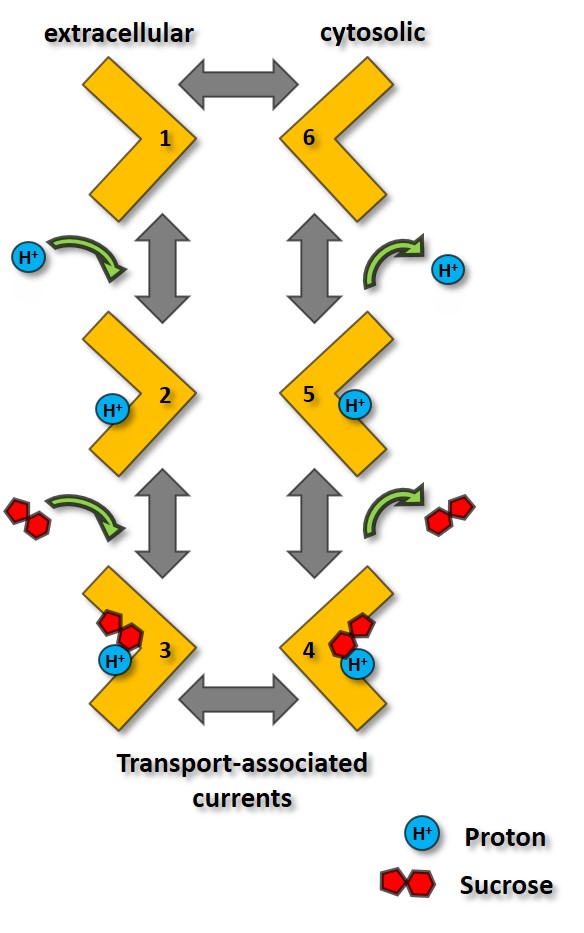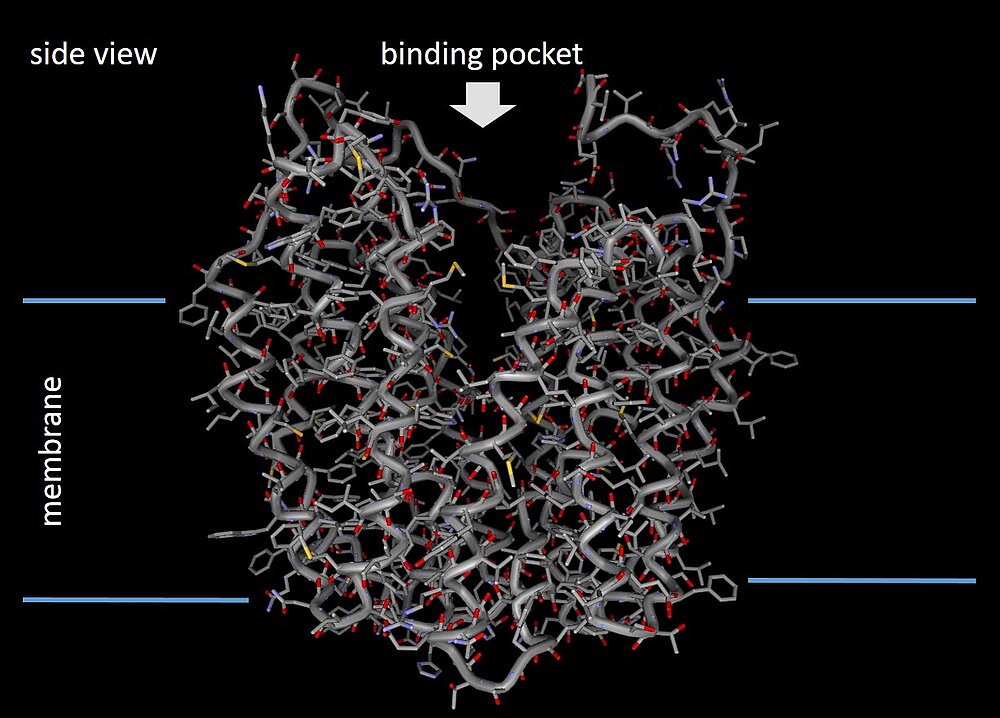Sugar nano-machines
Understanding the structure and function of sugar transporting nano-machines
The phloem network is as essential for plants as the vascular system for humans. This network represents a long-distance transport pathway for nutrients and information. To distribute photosynthetically gained energy-rich carbohydrates within the plant body, most higher plants use sucrose as their main mobile carbohydrate. Thereby proton-driven sucrose transporter play a crucial role in cell-to-cell and long-distance distribution of sucrose throughout the plant. A very negative plant membrane potential and the ability of sucrose transporters to accumulate sucrose concentrations of more than 1.5 M, indicate that plants evolved transporters with unique structural and functional features. The concentration of sucrose in phloem cells is up to 1000-fold higher than in the surrounding extracellular space. The carrier protein can accomplish this task only because proton and sucrose transport are tightly coupled and thus most interesting for biophysical analysis.
In the recent years, we elucidate the transport mechanism and structural features of the maize sucrose carrier ZmSUT1. Following heterologous expression in Xenopus oocytes, sophisticated biophysical techniques allowed us to dissect the transport cycle of plant sucrose transporters and to quantify individual steps (Fig. 1). Furthermore, conformational changes accompanying the transport mechanism were visualized by a combination of electrophysiological techniques and simultaneous fluorescence measurements. Thus, we could follow and manipulate the movement of the transporter online.
Currently, we perform site-directed mutagenesis in combination with functional test in oocytes to identify structural features of plant sucrose transporters, such as binding sites for protons or sucrose and the coupling mechanism. A 3D-model of ZmSUT1, based on the crystal structure of the E.coli lactose permease, is used as a guide to find residues involved in the reaction cycle of this sugar transporting nano-machine (Fig. 2).










